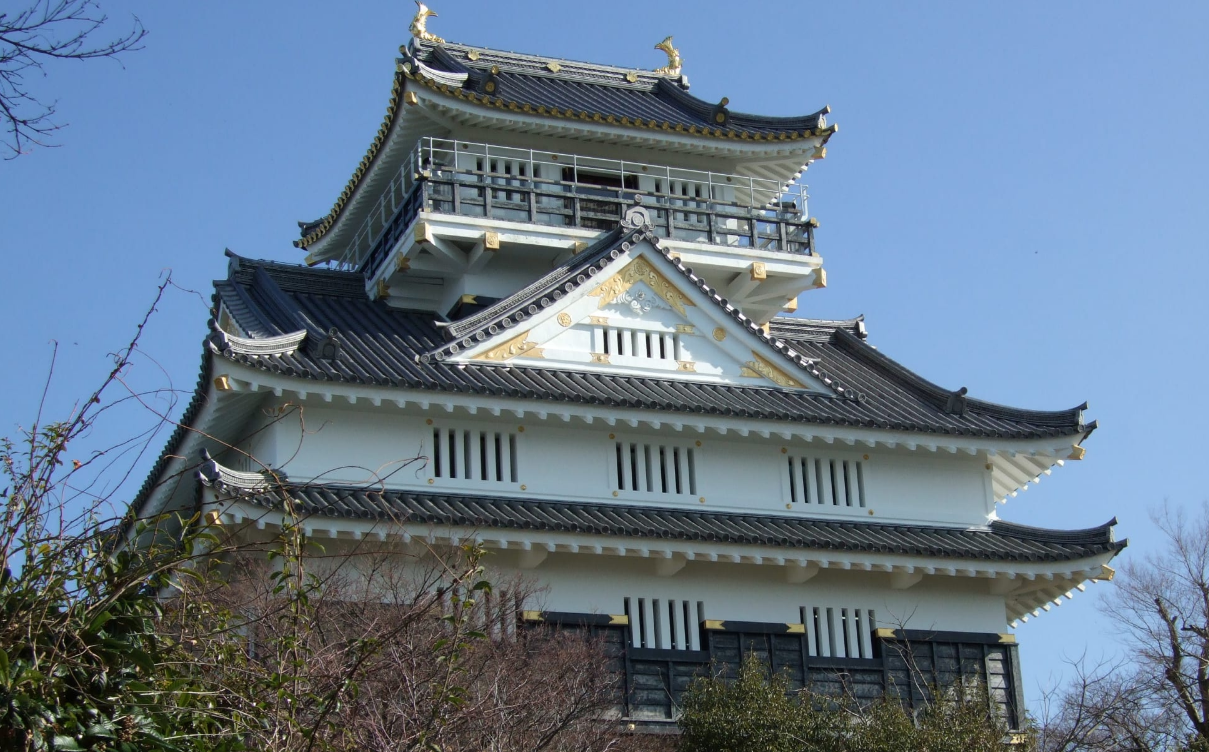When people think of Gifu, most travelers imagine Takayama’s preserved wooden streets or the storybook thatched houses of Shirakawa-go.
But the heart of Gifu Prefecture has another kind of beauty — quieter, closer, wrapped around the Nagara River and the green slopes of Mt. Kinka (金華山).
It’s the kind of city you can explore in half a day without rushing — from a morning café at Gifu Station to mountain views and a golden Buddha.
Here’s how a calm day in Gifu City unfolds.
9:00 a.m. – Start the Day with a Morning Set
Before heading to the park, enjoy one of Gifu’s best-known traditions: the Morning Set (モーニングセット).
Gifu’s café culture began decades ago when local shops started offering free light meals with your morning coffee. Today, almost every café or bakery near Gifu Station serves it — usually available until 11 a.m.
Typical sets include:
- Thick toast with butter or red bean spread (ogura)
- A boiled egg or mini salad
- Coffee or tea
Good spots around the station include small family cafés and local bakeries.
It’s the perfect slow start: sip your coffee, watch trains arrive, and feel the city waking up.
For local bakery outside the station but near it: Try Sakae Pan https://maps.app.goo.gl/5AetNHfjgeoNqSH37
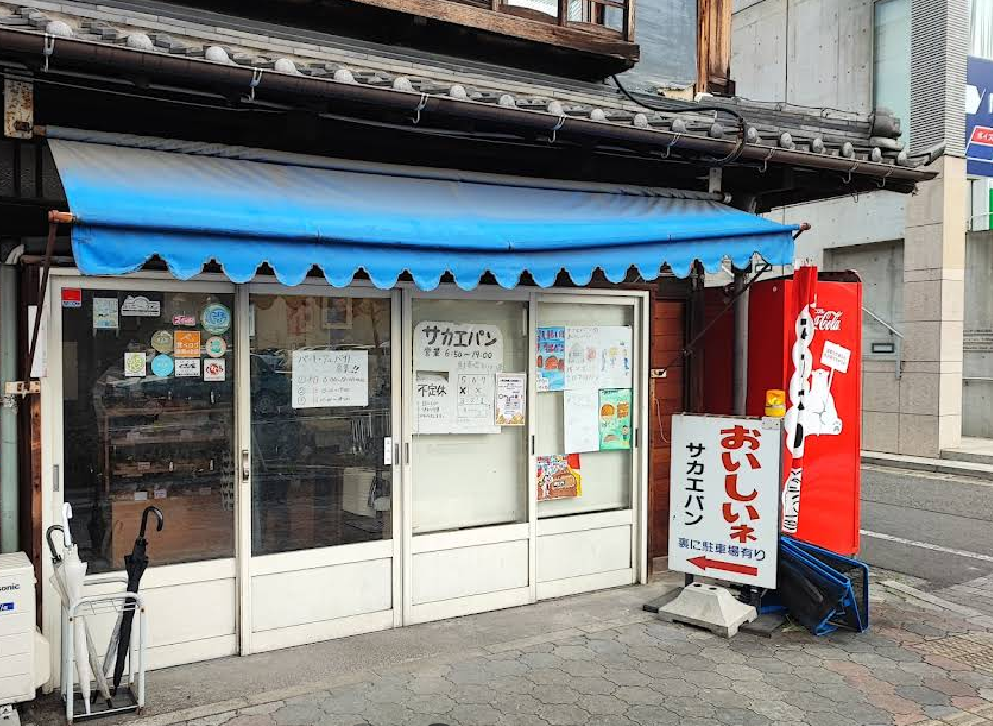
10:00 a.m. – Walk to Gifu Park
From the station, take a short bus ride or taxi (about 10 minutes) to Gifu Park (岐阜公園), located at the base of Mt. Kinka.
This park isn’t just a garden — it’s a living museum. Long ago, Saitō Dōsan and Oda Nobunaga, lords of Gifu Castle, lived here. If you walk slowly, you’ll sense layers of history beneath the calm surface.
As you stroll, you’ll come across:
- Oda Nobunaga’s Former Residence Site – stone remains and signs marking where the warlord once lived.
- Nobunaga Rakuichi – a small cultural zone recalling Nobunaga’s “free market” policy that encouraged merchants.
- Japan–China Friendship Garden – a lovely Chinese-style garden with ponds and bridges, symbolizing friendship between the two cities.
- Taisuke Itagaki Statue – dedicated to a Meiji-era democratic leader.
- Wellspring Area – cool natural spring water flowing down from the mountain.
Every corner of the park feels cared for. Streams sparkle under small bridges, and benches invite you to rest beneath maple and ginkgo trees.
10:30 a.m. – Visit the Three-Storied Pagoda
Toward the center of the park stands the vivid Three-Storied Pagoda (三重塔).
Painted bright vermilion, it shines beautifully against the green backdrop of Mt. Kinka.
Originally built about 100 years ago, the pagoda underwent a full restoration between 2014 and 2017, returning it to its brilliant color. It’s a favorite photo spot and a quiet reminder of how Gifu preserves its heritage for future generations.
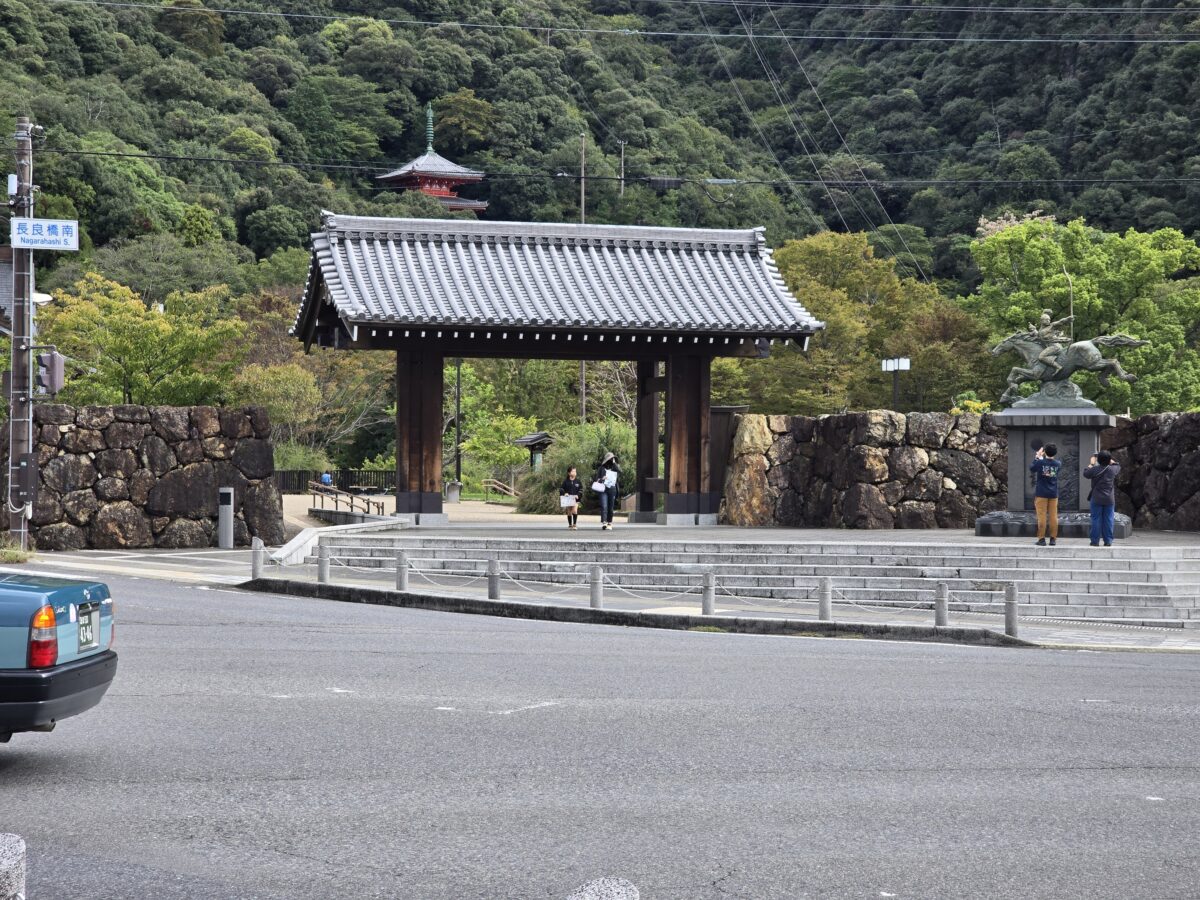
11:00 a.m. – Take the Mt. Kinka Ropeway
From the park entrance, it’s only a few steps to the Kinkazan Ropeway station.
In just three minutes, the cable car lifts you through layers of trees to the top of the mountain.
The view opens up little by little — tiled rooftops, winding rivers, and distant mountains.
If you prefer hiking, there are several trails (40–60 minutes each), but for a short trip, the ropeway saves time while still letting you enjoy the scenery.
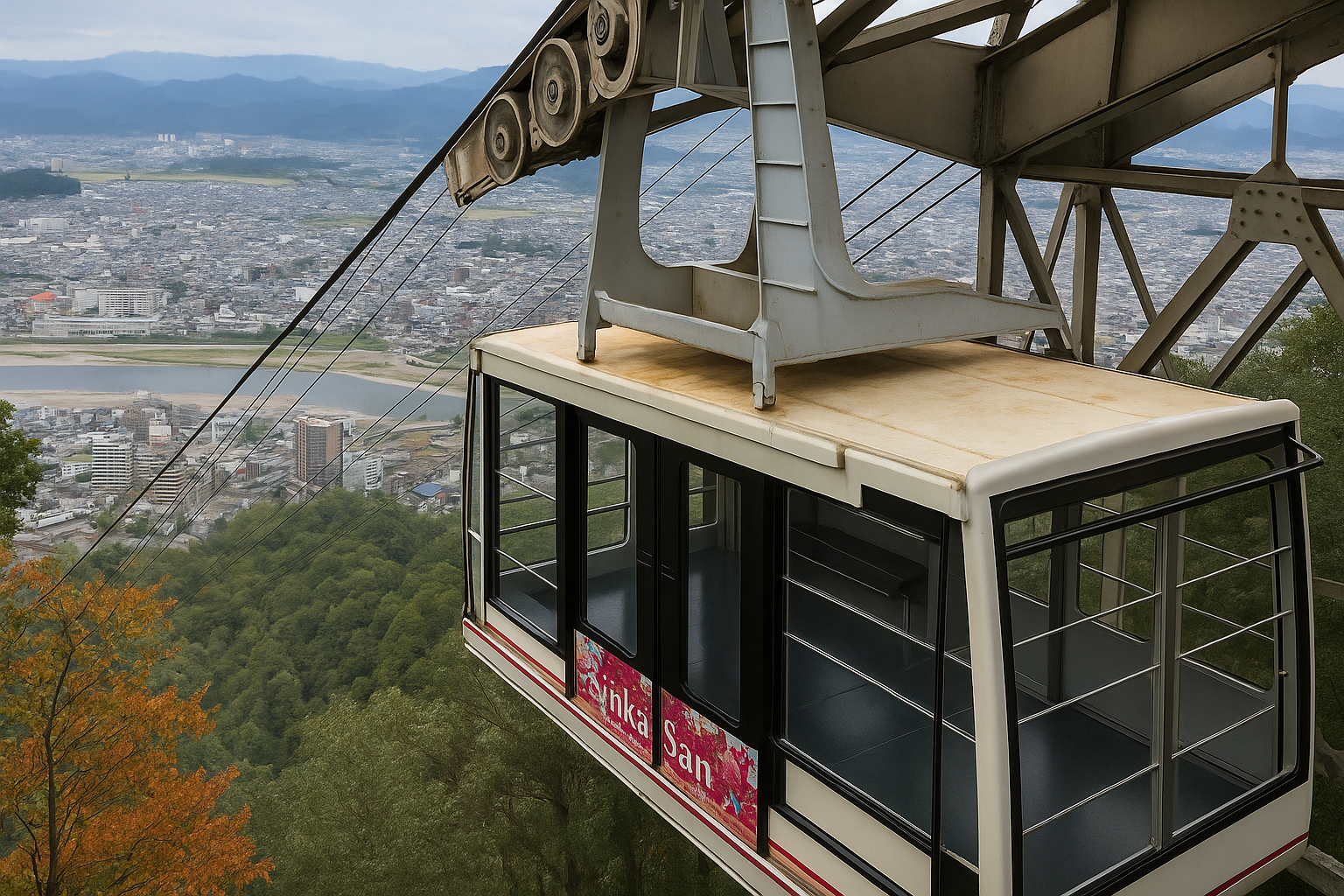
11:15 a.m. – Explore Gifu Castle
At the summit stands Gifu Castle (岐阜城) — small, elegant, and perched high above the city.
The original fortress dates back to the 13th century, but it was rebuilt several times due to wars and fires. The current structure, made of reinforced concrete, was completed in 1956 and now serves as a museum.
Inside, exhibits explain the history of Oda Nobunaga and the castle town. You’ll see armor, maps, and miniatures showing what the original wooden castle looked like.
Climb to the top floor, and you’ll be rewarded with one of the most stunning panoramic views in central Japan — the Nagara River gliding below, the plains of Gifu stretching out endlessly, and on clear days, even the Japanese Alps faintly visible on the horizon.
11:45 a.m. – Meet the Squirrels of Mt. Kinka
Just beside the ropeway summit station is one of Gifu’s most charming spots — the Kinkazan Squirrel Village (金華山リス村).
Its story is a cute one: during the 1936 Great Japanese Exposition held in Gifu Park, rare Formosan squirrels were exhibited. Some escaped into the mountain forest and became wild.
Years later, locals created a safe enclosure where children could interact with them. Japan’s first squirrel village opened in 1965, and it still delights visitors today.
Inside the spacious, sun-filled enclosure, squirrels hop freely among trees and fences.
Wearing leather gloves, you can hold small treats that zookeepers provide, and the squirrels will gently climb up to eat.
It’s quiet, wholesome fun — and a lovely way to take a break between sightseeing spots.
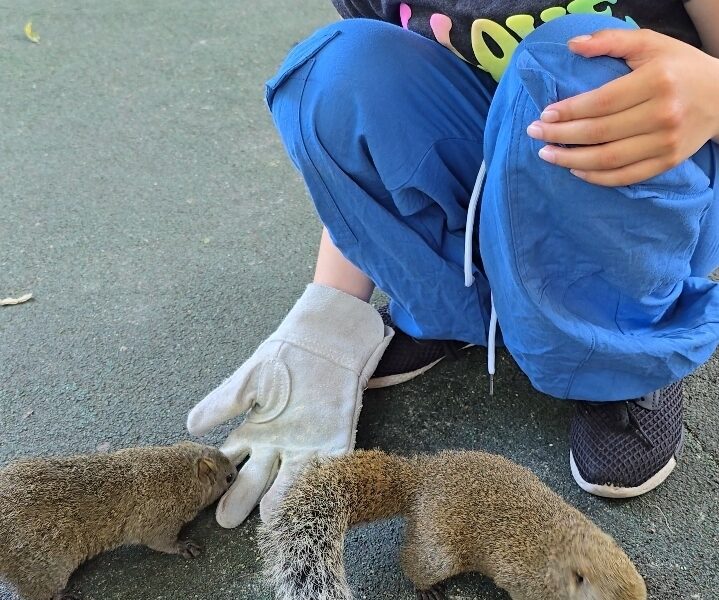
12:15 p.m. – Lunch with a View at the Summit
After exploring, refuel at one of Mt. Kinka’s restaurants and terraces — each with panoramic views of the city.
Le Pont du Ciel Restaurant (ル・ポン・ドゥ・シエル)
This mountaintop restaurant is known for its hearty local meals and incredible views.
Their signature dish, Nobunaga Dote-don, is a bowl of beef tendon and pork innards simmered slowly in miso — it even won the Gifu City Local Gourmet Festival Grand Prize.
Other favorites include Miso Katsu made with Mino Healthy Pork and Hida Takayama Ramen.
Every seat faces the window, so you can enjoy your meal while gazing over the Nagara River.
Terrace Court 329
For something lighter, stop at Terrace Court 329 near the viewing deck.
It serves local sweets like Kinkazan Churros, Sweet Potato & Chestnut Waffles, and Nagaragawa Cider — simple snacks that pair perfectly with the view. (Cash only.)
If you prefer fresh air, the Nobunaga Terrace offers outdoor seating with a panoramic breeze — perfect for a quiet rest before heading down.
Optional – Stay for the Night View
If your schedule allows, linger until evening.
When the sun sets, Mt. Kinka turns into one of Gifu’s most beautiful night-view spots.
From the observation deck, the city lights shimmer like stars scattered across the land.
The glow of the Nagara River and the quiet hum of the city below create a view you won’t forget.
Some nights the ropeway operates special evening runs, so check in advance if you’d like to experience the city in gold and silver light.
1:00 p.m. – Return to Gifu Park and Visit the Museums
Take the ropeway back down and spend a little time exploring the park’s cultural side.
- Gifu City Museum of History (岐阜市歴史博物館) – explains Nobunaga’s rule and Gifu’s transformation during the Warring States period.
- Kato Eizō & Tōichi Memorial Art Museum (加藤栄三・東一記念美術館) – exhibits works by two brothers from Gifu known for their refined Nihonga (Japanese painting).
The museum is small but beautifully arranged — a calm space where you can rest and feel the quieter side of Japanese art.
2:00 p.m. – Walk to the Nagara River
Just beyond the park flows the Nagara River, famous for its Ukai (鵜飼) cormorant fishing — a 1,300-year-old tradition still practiced today.
From May 11 to October 15, fishermen guide trained cormorants by torchlight to catch ayu fish at night.
Watching the boats drift under the flames is like stepping back in time; the same method has been passed down for generations.
If you visit in summer, evening cruises depart nearby so you can watch the performance up close, with dinner or bento served on board.
2:30 p.m. – Daibutsuchō and the Great Buddha
A short walk from Gifu Park leads to Daibutsuchō (大仏町) and Shōhō-ji Temple (正法寺), home to the Gifu Great Buddha (岐阜大仏).
From outside, the temple looks modest, but inside stands a golden statue nearly 13.7 meters tall, the largest dry-lacquer Buddha in Japan.
It was begun in 1790 by Priest Ichū, who hoped to protect the region from earthquakes and famine. Built around a ginkgo-wood pillar, the statue’s frame of bamboo and clay was covered with thousands of handwritten Buddhist sutras, then layered in lacquer and gold leaf.
The work took 38 years to complete, finished by Ichū’s successor in 1832.
The atmosphere inside is gentle — faint incense, creaking floors, and the Buddha’s calm face glowing softly in the dim light.
Admission is ¥200, and the experience feels far more personal than the giant Buddhas in Nara or Kamakura.
3:00 p.m. – End with a Café Break
By mid-afternoon, head back toward the park entrance.
There are several small cafés nearby where you can enjoy cake, matcha, or a simple iced coffee while looking back at the mountain you just explored.
Gifu isn’t a place for rushing — it’s for small moments that breathe: the sound of running water, the smell of roasted coffee, the way locals smile when you say arigatō.
Why This Half-Day Feels Special
Most people come to Gifu Prefecture chasing the beauty of Takayama or Shirakawa-go, but the capital city has its own quiet charm.
Everything here — from the morning café toast to the mountain breeze and the Buddha’s golden glow — feels close, human, and real.
You don’t need a guide or a full-day tour.
Just half a day, a bit of curiosity, and time to walk slowly.
That’s enough to discover Gifu’s gentle heart — the one that still beats softly between its mountains and rivers. 🌿
📍 Suggested Itinerary Summary
| Time | Stop | Highlights |
|---|---|---|
| 9:00 a.m. | Café near Gifu Station | Morning Set breakfast |
| 10:00 a.m. | Gifu Park | Historical sites & gardens |
| 10:30 a.m. | Three-Storied Pagoda | Restored vermilion landmark |
| 11:00 a.m. | Ropeway to Mt. Kinka | Scenic ride to summit |
| 11:15 a.m. | Gifu Castle | Museum & panoramic view |
| 11:45 a.m. | Squirrel Village | Feed friendly squirrels |
| 12:15 p.m. | Le Pont du Ciel / Terrace Court 329 | Lunch with a view |
| 1:00 p.m. | Return to Gifu Park | Visit museums |
| 2:00 p.m. | Nagara River | Optional Ukai sightseeing |
| 2:30 p.m. | Shōhō-ji Temple | See the Great Buddha |
| 3:00 p.m. | Café break | Reflect & relax |
How to Get to Gifu Castle from Gifu Station
Getting to Gifu Castle (岐阜城) from JR Gifu Station is simple, and the journey itself is part of the fun!
By Bus (Most Convenient)
- From JR Gifu Station North Exit, go to Bus Stop #12.
- Take the Gifu Bus bound for “Gifu Park / Gifu City Museum of History” (岐阜公園・歴史博物館行き).
- The ride takes about 15 minutes.
- Get off at Gifu Park / Museum of History Stop (岐阜公園・歴史博物館前).
- Walk for about 5 minutes to reach Kinkazan Ropeway Station inside Gifu Park.
- Ride the Kinkazan Ropeway (金華山ロープウェー) to the top of Mt. Kinka — the castle is a short walk from the ropeway summit.
Fare & Time Guide
- Bus fare: ¥250 (one way)
- Ropeway: ¥1,100 round trip (adults)
- Castle admission: ¥200 (adults)
- Total time: Around 25–30 minutes
📍 Google Maps Direction Link:
👉 Get Directions from Gifu Station to Gifu Castle
By Taxi
If you prefer comfort, take a taxi from JR Gifu Station to Gifu Park (about 10 minutes, ¥1,500–¥2,000).
From there, ride the ropeway up to the castle.
On Foot (Scenic Route)
If you have extra time, walk the 4 km path (about 45–50 minutes).
You’ll pass through Yanagase Shopping Street (柳ヶ瀬商店街) and cozy cafés — perfect for a slow travel vibe.
You don’t have to follow this itinerary by the clock.
Gifu City is best enjoyed slowly — stop for an extra cup of coffee, linger by the river, or take a quiet seat under the maple trees in the park.
Let your curiosity guide you instead of your watch.
Whether you spend two hours or an entire afternoon, Gifu Castle and its surroundings will reveal their charm at their own pace — and that’s the beauty of it.

